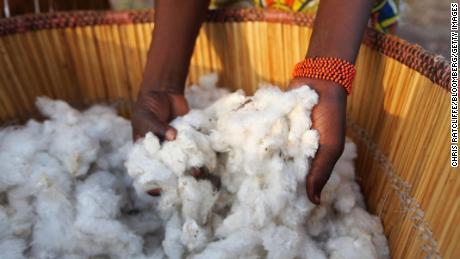Human trafficking is an estimated $150 billion industry, and one of the fastest-growing transnational criminal activities of the 21st century. Trafficking may seem like a distant problem or one that doesn't touch us personally, but we are unwittingly involved any time we buy something made by exploited labor.
Human trafficking is the word used to describe people being forced to work against their will in inhumane conditions, for little or no pay — whether in a factory in China, trash heap in India or private home in New York. It's also used to describe those held through coercion, fraud, force or the threat of force in the sex trade or in combat. Victims are often lured by false promises of decent work. Traffickers often take passports and money, and make threats against victims or their families if they try to escape.
As consumers, we inadvertently participate in this tragedy when we buy or use something made by these captives. While in the past, people made their own clothes or knew the seamstress who sewed them, and maybe lived down the street, today, the vast majority of clothing is manufactured outside the United States. Computer parts, too, come from all around the world. This means we literally do not see our products being made — or the conditions in which the producers work. Child labor trafficking in particular plagues many of the products we use today. The U.S. Department of Labor lists 148 goods made in 76 countries that are at significant risk of being made with child labor, including tobacco from Brazil and cotton from Burkina Faso.
While this sounds like a depressing aspect of globalization and an area out of our control, we can actually make a real difference in people's lives through our behavior as consumers. Tweaking what we buy and who we buy it from is surprisingly easy — and cost-affordable — and can have a real impact on producers here and around the world.
I first discovered the power of "conscious consumerism" in 2013, when I met former sex trafficking victims in India. These women had escaped exploitation and were now gainfully employed, doing dignified work in a sewing cooperative in Kolkata. I was traveling with the McCain Institute, a nonprofit I'd gone to work for after nearly a decade spent focusing on anti-terrorism and global women's issues in the U.S. Department of State. As I'd seen again and again, women who escaped or were rescued were vulnerable to re-exploitation if they couldn't find a good job.
In India, we tromped up a concrete stairway into Sari Bari, a social enterprise started by volunteer-turned-entrepreneur Sarah Lance. What I saw blew me away. The pride on the faces of the women, the atmosphere of safety — and the beautifully sewn and screen-printed bags and purses they were selling — was like nothing I'd seen in all my years on this issue. Everyone in our group wanted a bag or purse. The products practically sold themselves.
Since then, I've gone on to meet so many women and men who have finally found employment through socially conscious businesses and nonprofits like Sari Bari. I've also met more people like Sarah Lance, real heroes dedicated to creating safe work for all kinds of vulnerable communities: artisans, farmers and bakers in places like Nepal, Haiti, Kenya, Greece and the United States.
Increasingly, we have access to items made in these types of freedom enterprises, and to information about how, and by whom, our goods were created. There's a growing movement to expand supply-chain transparency so we can see who made what and how.
Articulating who by and how a product is made is now a staple in coffee (as any visit to a Starbucks or to many local roasters/brewers shows). But other industries, like fashion, gemstones (particularly diamonds) and even packaging are catching up. The very idea of questioning the supply chain is somewhat new, developing on the heels of mass communication that brings the lives of others into our living rooms and onto our phones; the desire for supply chain transparency has followed suit.
It's absolutely possible to know who made our items, and to buy from companies we trust.
Here's how to become a powerful participant in the fight against human trafficking:
Look for cotton certified by the Better Cotton Initiative (BCI). The BCI certification won't necessarily be on the label, but you can check at bettercotton.org before heading to the mall to see which retailers participate. Brands like American Eagle, Gap, Vans and Wrangler all work with BCI. Skip products made of cotton from Turkmenistan, which is often harvested through child exploitation. (Cotton products from Turkmenistan are actually banned in the United States.)
Winter is a great time for a delicious seafood gumbo, but the shrimp industry in Thailand has a long history of forced labor, including that of children. While non-profits are working with the Thai government to route out this abhorrent practice, we can buy our seafood domestically. The shrimp industry is strong — and well-regulated—in Alaska, Louisiana, Texas and North Carolina. Your seafood seller will know where the crustaceans came from.
The price of that bargain carpet that seems too good to be true probably is. Children are often forced into the carpet-making industry throughout South Asia. Opt for a rug with a GoodWeave Label, a South Asian-based certifying organization that guarantees that no child or forced labor was used in making the product. GoodWeave-certified rugs are price-accessible and available at retailers like Target.
It takes some effort to check who made what and where, but this small change in your life can make a big difference in someone else's.
By Jane Mosbacher Morris
Source: CNN
https://edition.cnn.com/2019/01/14/perspectives/human-trafficking-fight/index.html
 FR
FR EN
EN AR
AR











